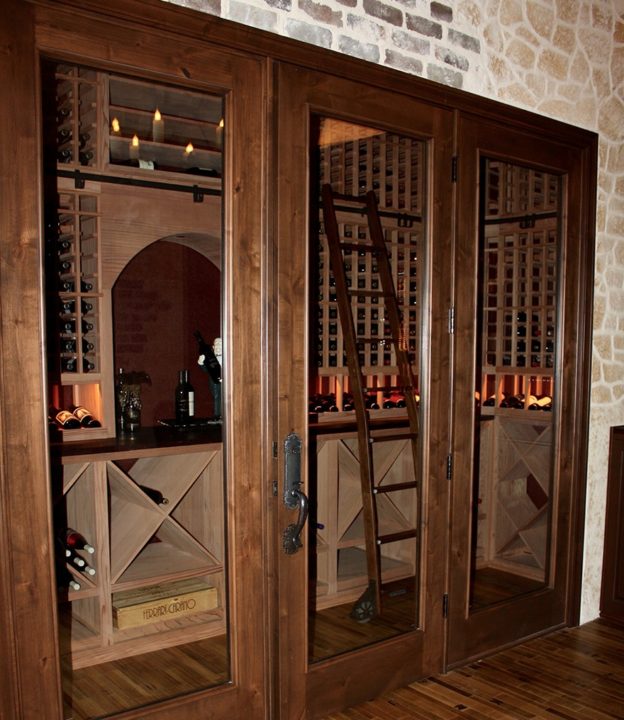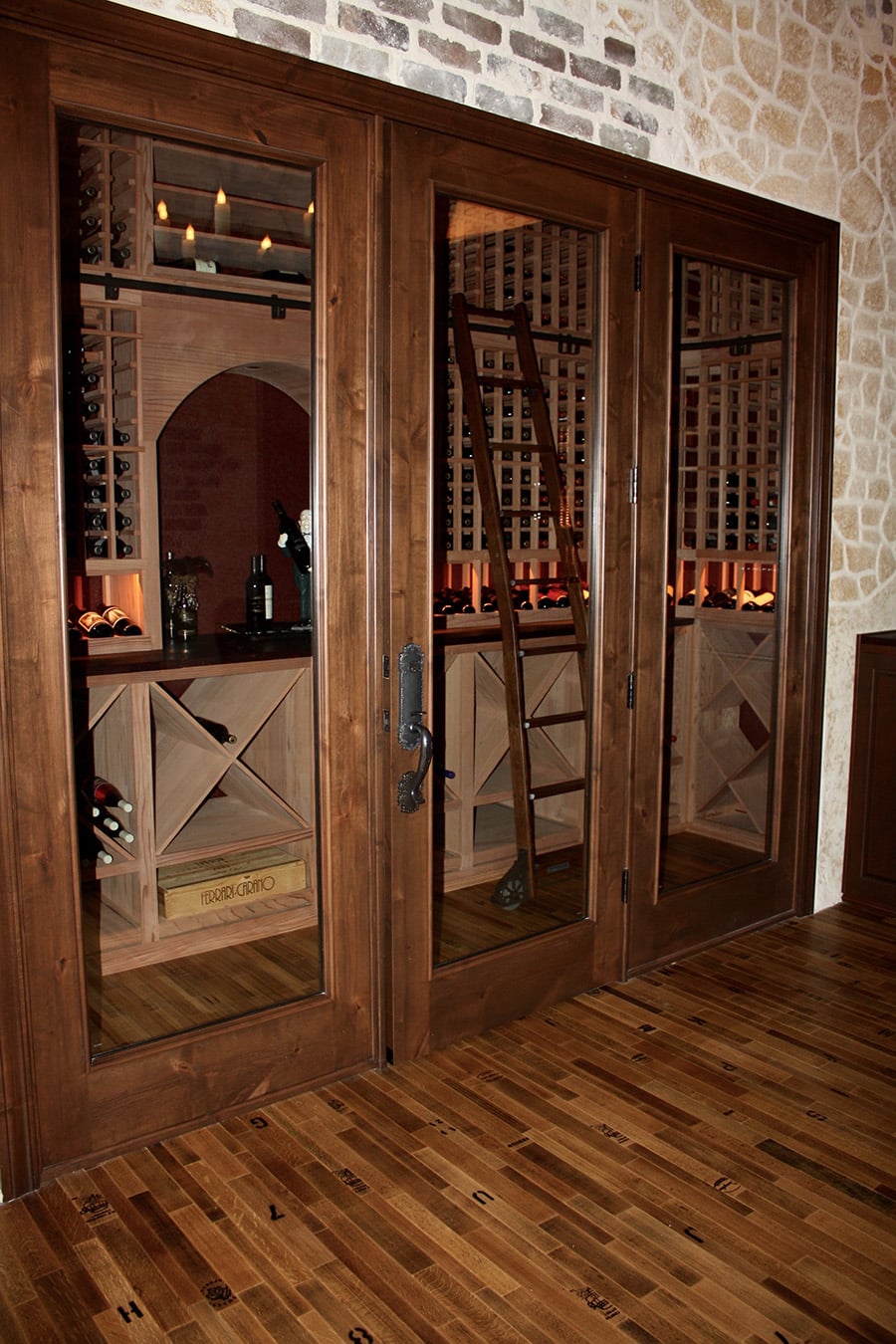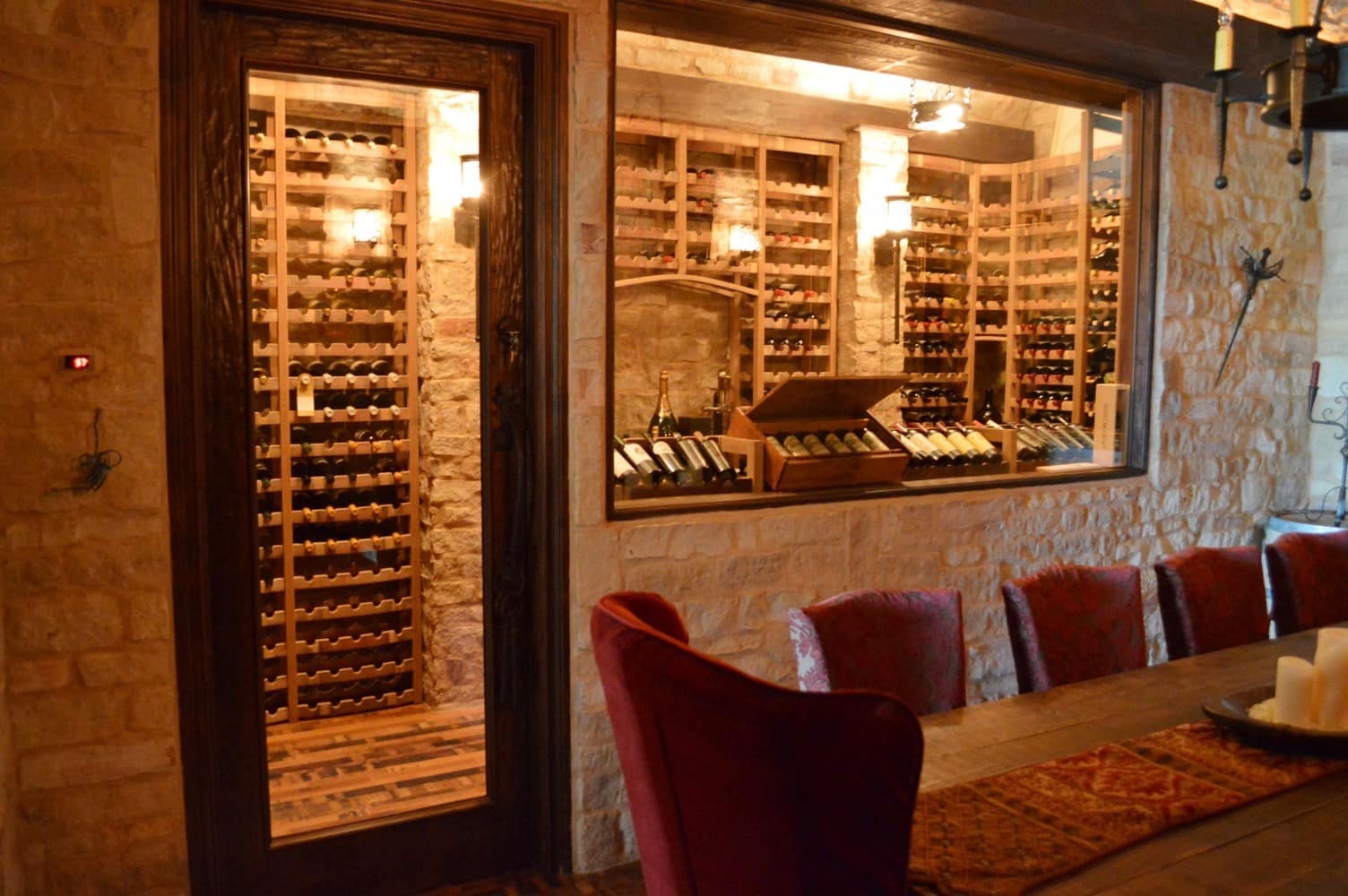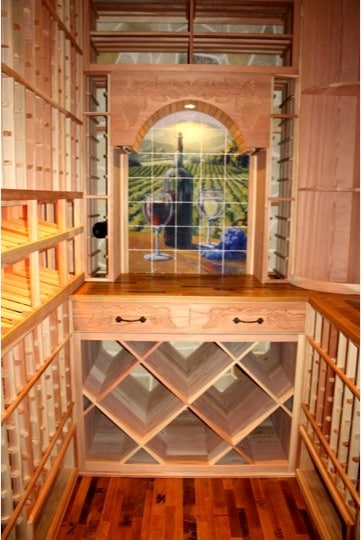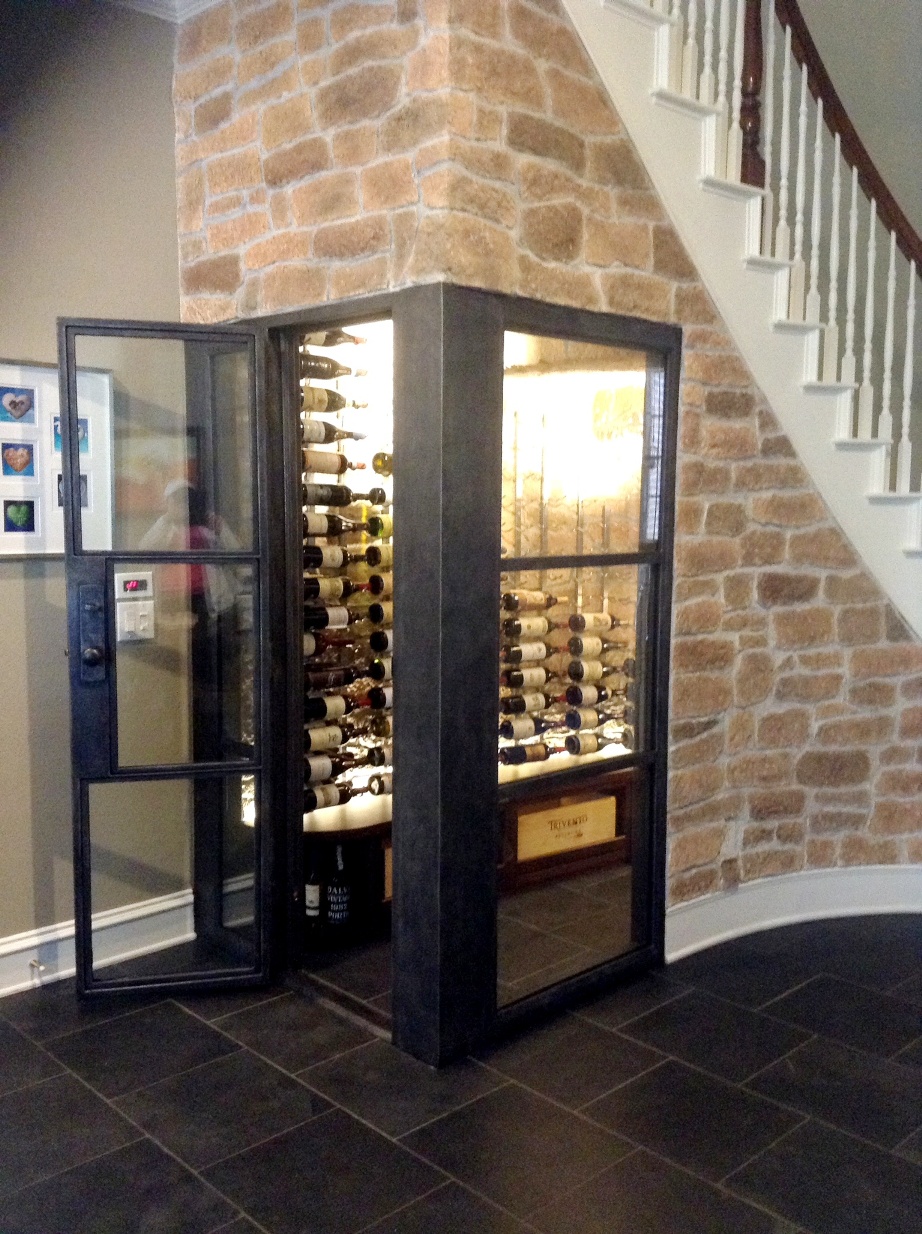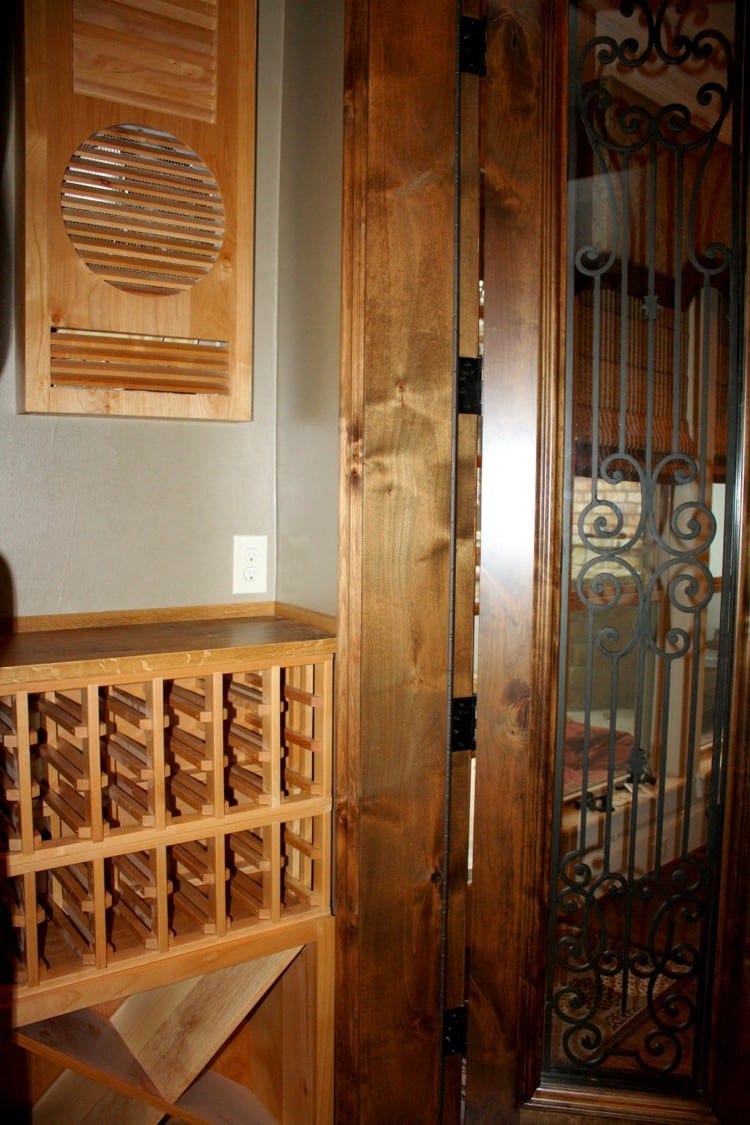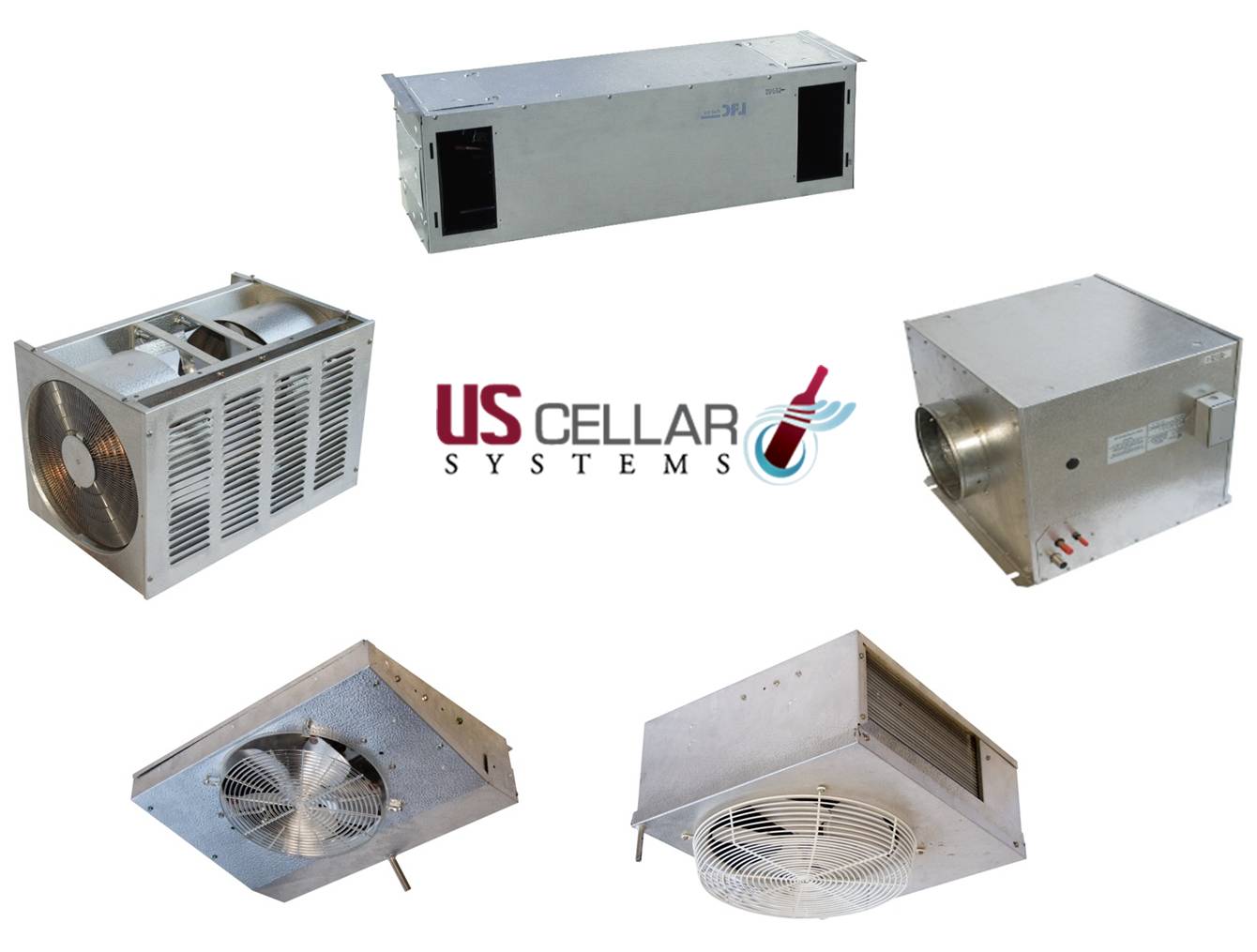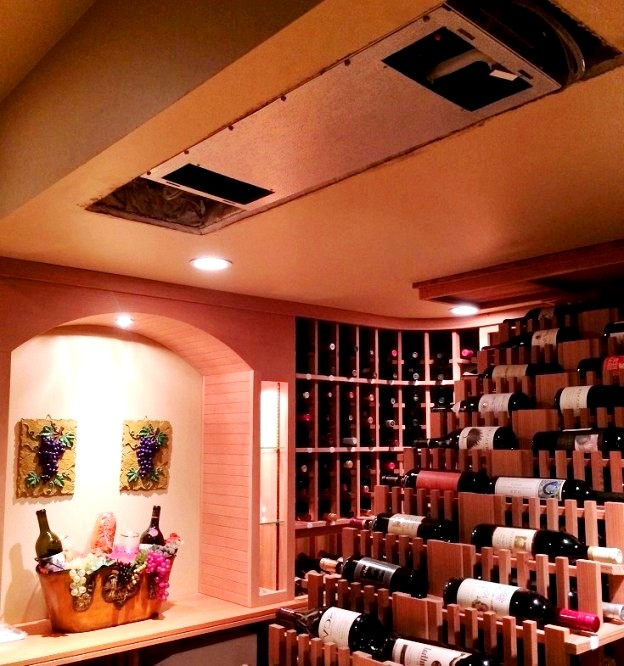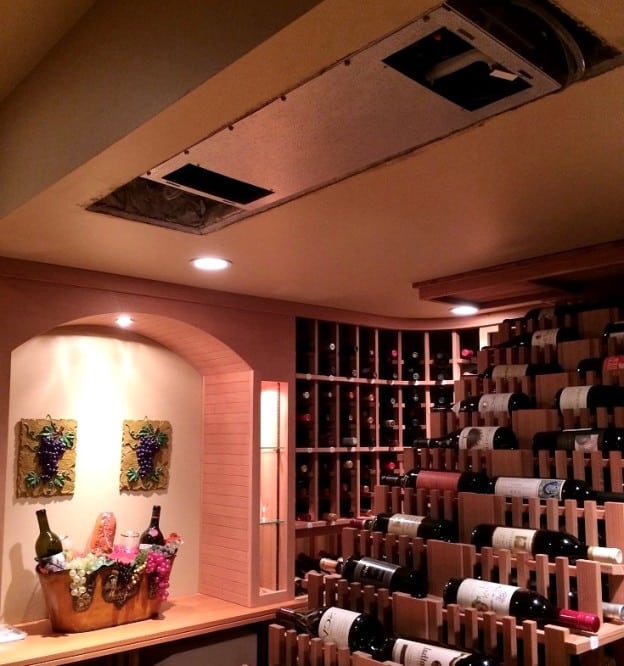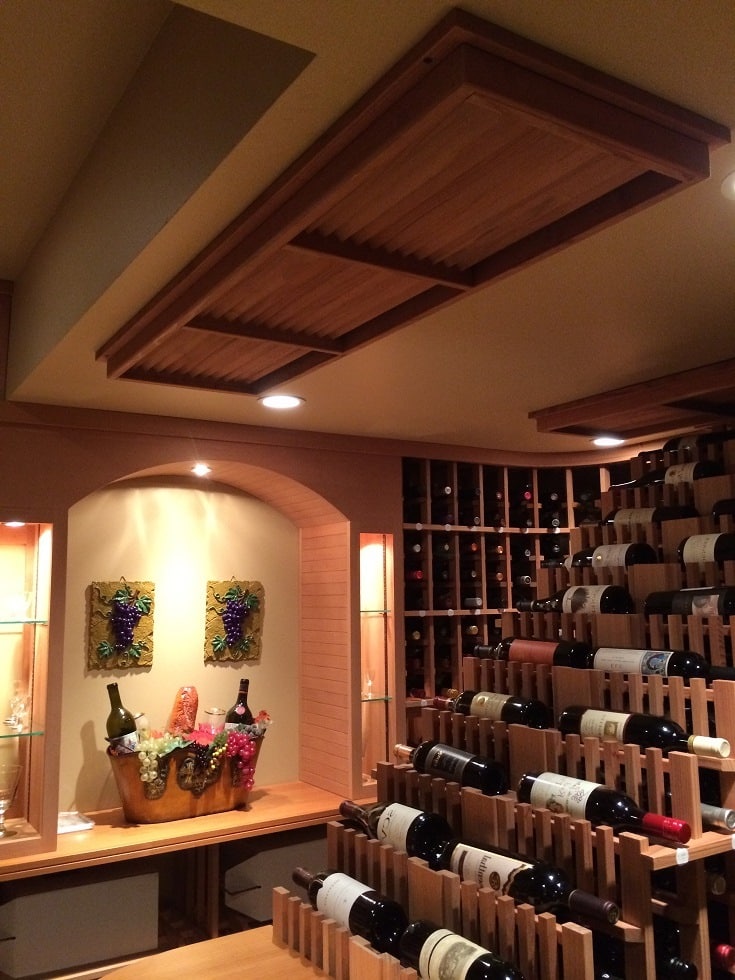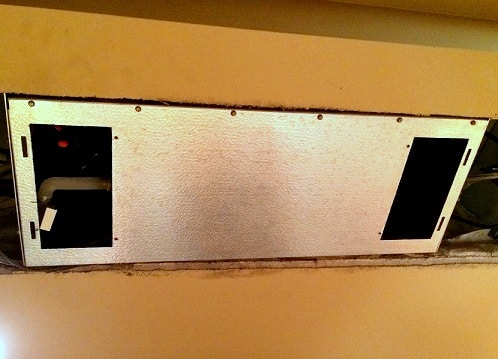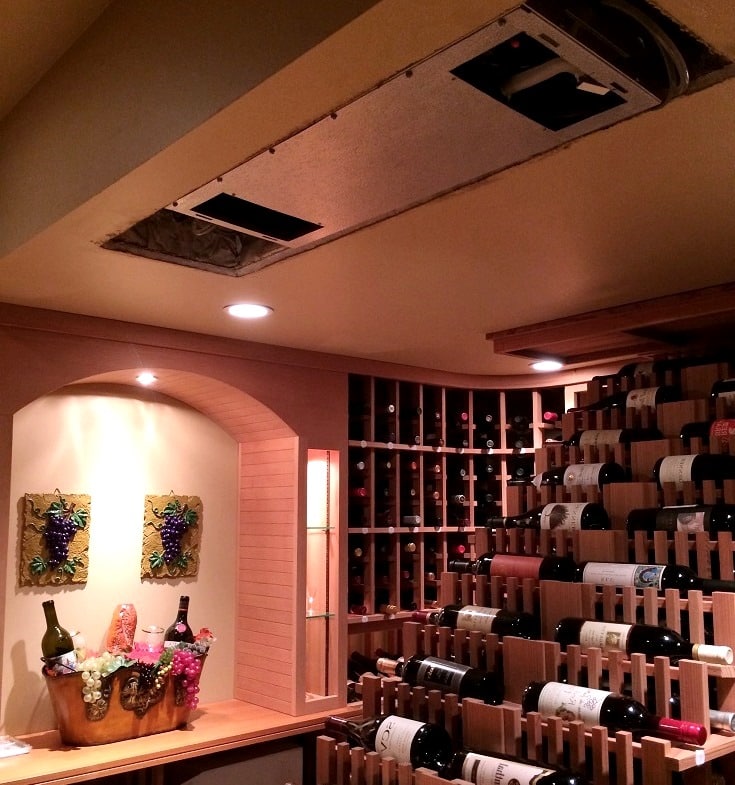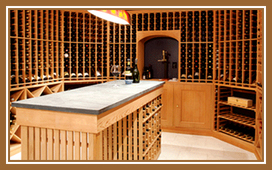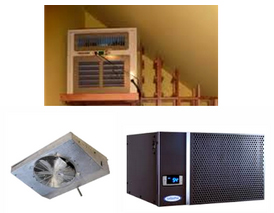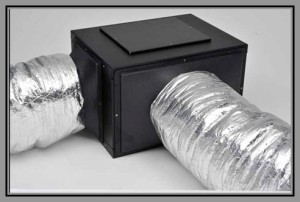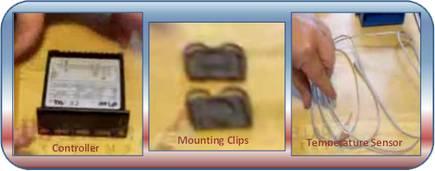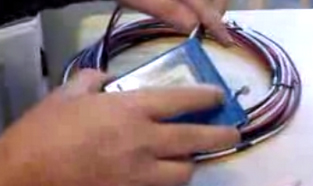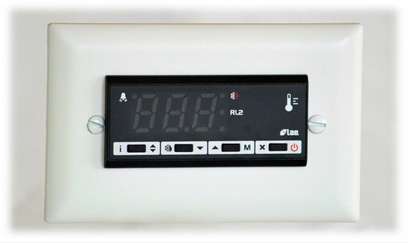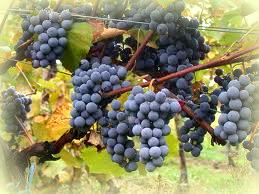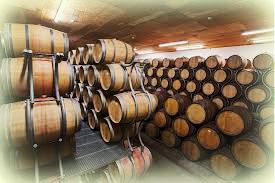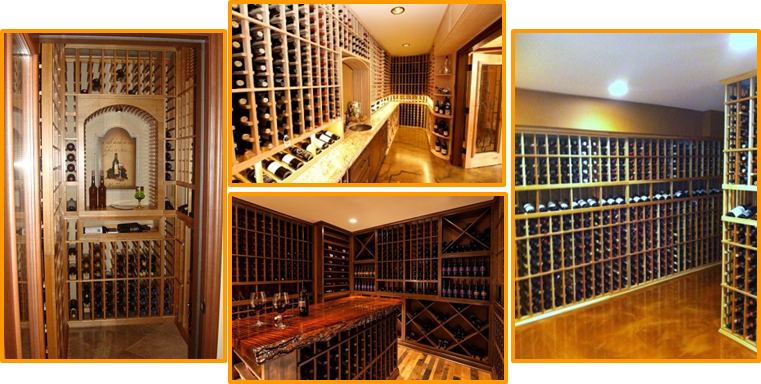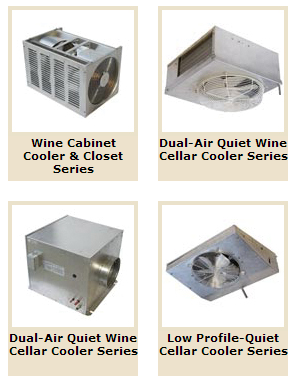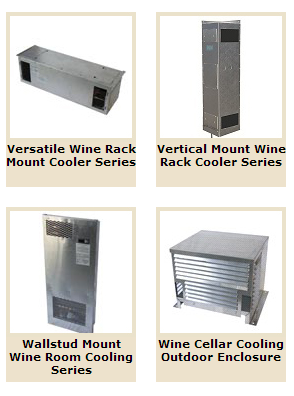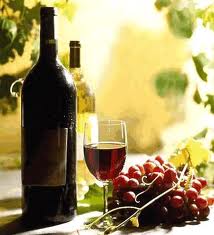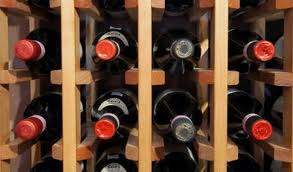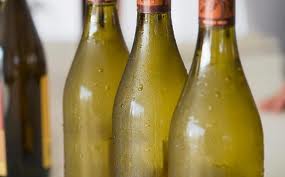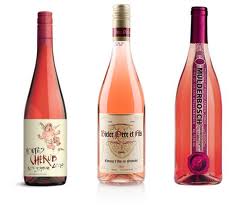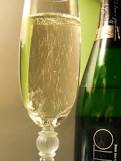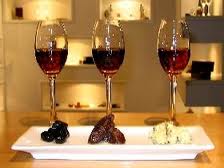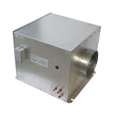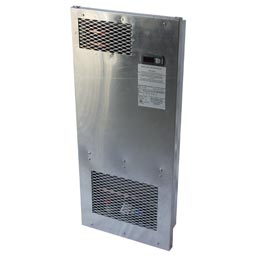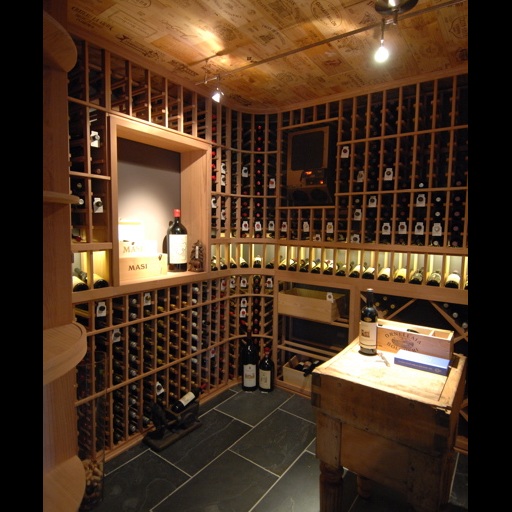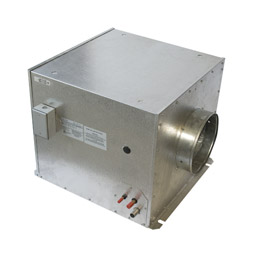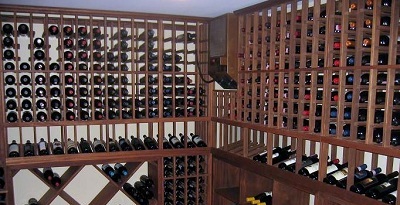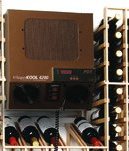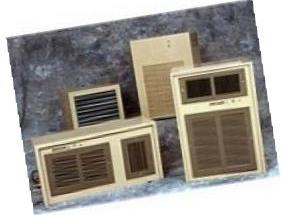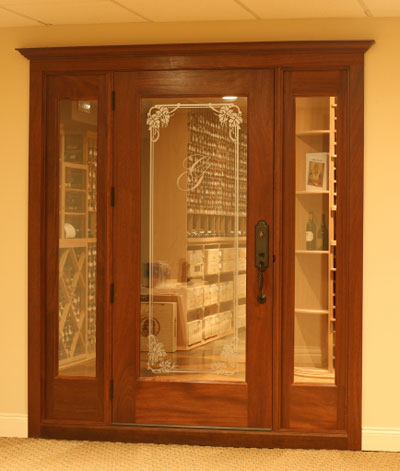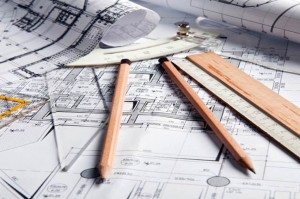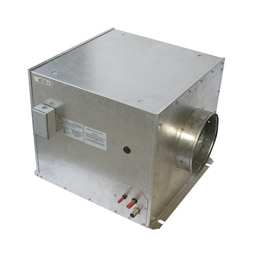Build Functional and Exceptionally-Designed Custom Wine Cellar for a Higher Resale Value
Many of the contracting partners we work with understand this fundamental truth: Building custom wine cellars in luxury homes does increase the value of those properties—which is why we see such enormous growth in the industry.
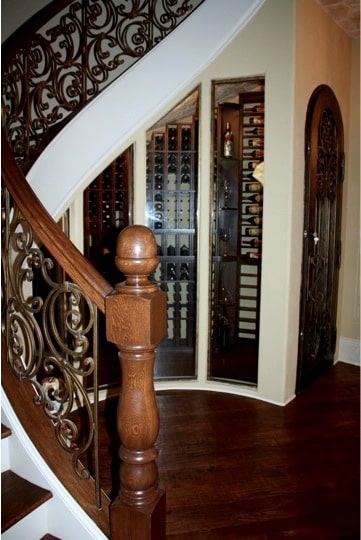
This contemporary home wine cellar was built by Wine Cellar Specialists. They used US Cellar Systems’ Rack Mount (RM3600) ductless split wine cooling unit.
When you build a wine cellar in a smart way, adding a high-quality wine cellar cooling unit, insulating the space correctly, you can increase the value of the homes that you are building. And homeowners will want to buy and install these wine storage systems knowing that when it comes time for resale they’ll make more on their investment.
Why Home Buyers Love Wine Cellars
A custom wine cellar with a compelling design upgrades the lifestyle of the buyer because the new space gives them joy and comfort. It can be a great place for entertaining friends while sipping a glass of wine. It adds a strong emotionally connected area to a luxury home. Homebuyers are motivated to purchase based on emotion. Wine Cellars become the emotional lynchpin to a home’s design, often becoming the focal point of the entire residence.
What the Realtor Will Advertise to Potential Buyers
Standard residential real estate thinking suggests that the amenities that entice homebuyers are the pool, gym, home theater, and entertainment area.
However, most realtors will most likely introduce or advertise the space in the home that is most elegant and intimate. Homebuyers are looking for a home with sentimental value, built with passion. Renovating an attic will have no significant impact on the resale value of a home.
An effective way to enhance the value of a home is to add a custom space, like a personalized wine cellar, that will add a “wow” factor to your residential property. A well-designed wine storage space will attract buyers because they add a luxurious appeal to homes.
A Beautiful and Effective Wine Cellar Built by a Master Builder Will Generate Word of Mouth
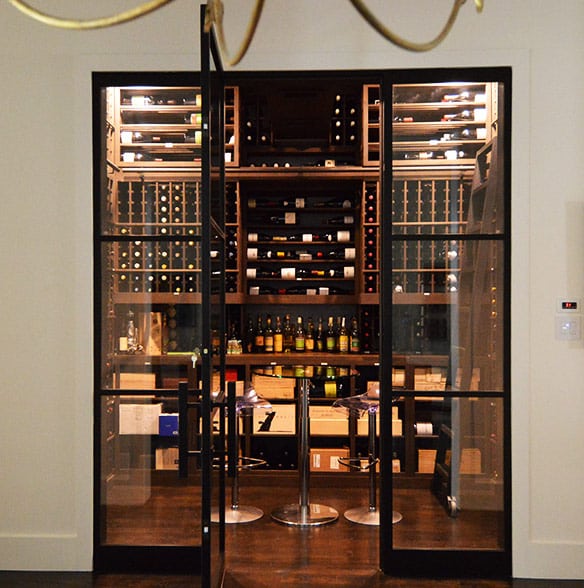
The finished doorway to the residential custom wine room in Dallas. Iron door flanked by glass window panes opens up into the new wine room.
Building a custom wine cellar is not as easy as 1, 2, 3. US Cellar Systems, a wine cooling expert in California, collaborates with builders and contractors of wine cellars. We always want to ensure that every client’s wine storage room is built properly with passion and creativity.
We don’t just want our customer’s wine cellars to last for many years. We know that a well-built wine cellar can be the deciding factor for potential buyers, making it a priority in the construction process.
Common questions that visitors ask about a residential wine cellar include:
- How is it was constructed?
- What are the types of wine stored in it?
- Total wine storage capacity?
Create Buzz in Your Luxury Home!
When guests have gathered relevant information, and are impressed about it, they will share that information with their family and friends. More and more people will be interested in coming to that home and seeing its unique features. This causes “buzz” around a luxury home on sale, the ultimate goal of anyone trying to sell a property.
Transforming an Underutilized Space into an Attractive Wine Display and Storage Area
You can build a wine cellar in many underutilized areas in a home—in the basement, living room, garage, kitchen, or under the staircase.
When remodeling a luxury home, builders in California usually recommend adding a custom wine cellar. The cost of homes is high compared with the expense of a wine cellar addition, making it a smart upgrade.
Keep in mind that the location of the wine room plays an important role in the overall appeal of the home. Upscale buyers can be amazed to see a wine display and storage area as soon as they enter the door. This demands a higher selling price for people who are planning to buy a home with a dedicated wine cellar.
How an Efficient Wine Cellar Cooling System Can Affect a Home’s Value
A savvy luxury homebuyer who is looking for a wine cellar in a property will want to know if the room is designed and built to achieve the correct environment required for wine storage. A wine cellar without an efficient refrigeration system installed in it can be useless. It will not have a significant impact on the resale value of a home to make its addition worthwhile.
Wine requires stable storage conditions for proper maturation. It’s number one enemy is heat. When the temperature and humidity levels in a wine room are not regulated, the wine will deteriorate easily, resulting in a waste of time and money.
Remember, people buying a home that will want to buy a wine cellar are often passionate about collecting wine. Giving them logical reasons to purchase your home, with customized, high-quality wine cellar refrigeration will inspire the passion you’re trying to generate in every home you build and sell.
Give Homebuyers Something to Talk About
Building a wine cellar with a high-quality cooling unit will give the salesperson offering the home a great topic to discuss with homebuyers, a subject many customers will find fascinating, fun, and inspiring a purchase.
We only Sell the Best Wine Cellar Cooling Units
At US Cellar Systems, we provide flexible and custom wine cooling solutions to contractors and builders nationwide. All of our cooling units are commercial-grade split refrigeration systems.
We have a wide array of selections that will cater to the specific functional, aesthetic, and financial requirements of every construction project and client’s needs.
Customer Service for Wine Cellar Contractors
Our customer service is unparalleled. We provide in-depth assistance from the beginning of the construction process, until after the project is completed. Find out why contractors, interior designers, and architects love working with us.
Learn more about the products and services we offer.
Need a Partner in Building a Home Wine Cellar?
If you are a contractor or designer of luxury homes interested in increasing your construction company’s profits? Whether you build new homes or focus on remodeling/renovations, adding a refrigerated custom wine cellar will benefit your clients by increasing the resale value of their property. And it will get them excited about buying from you. Create more emotional energy in the construction projects that you’re working on today.
Add wine cellar construction to your line of customized products and services. Contact US Cellar Systems today to learn more about adding wine cellar construction as a specialty to your company. And begin making more money on each luxury home sale!




